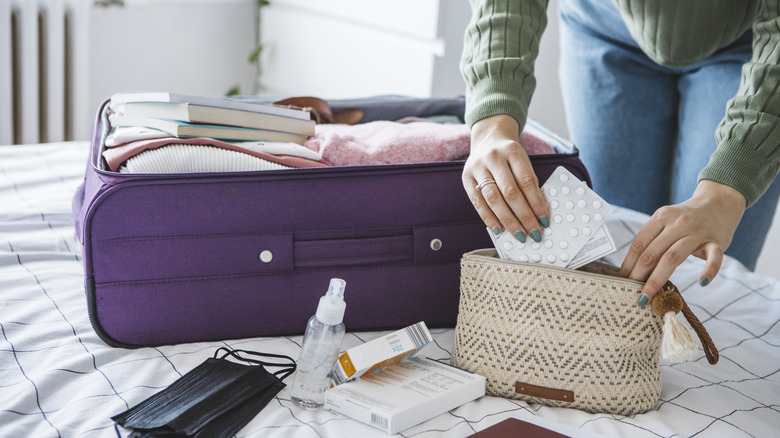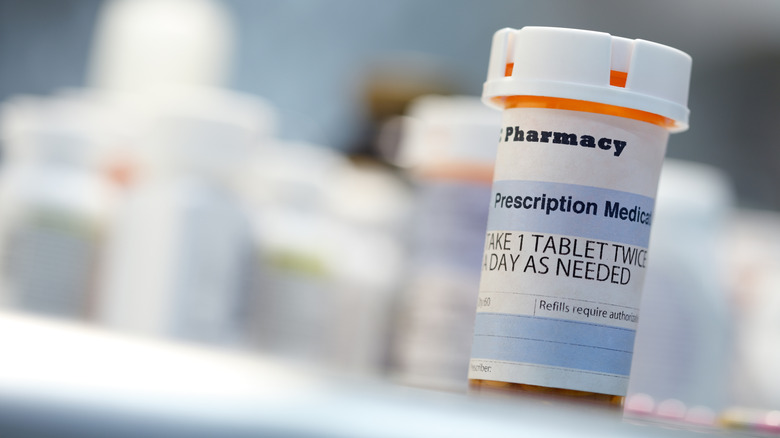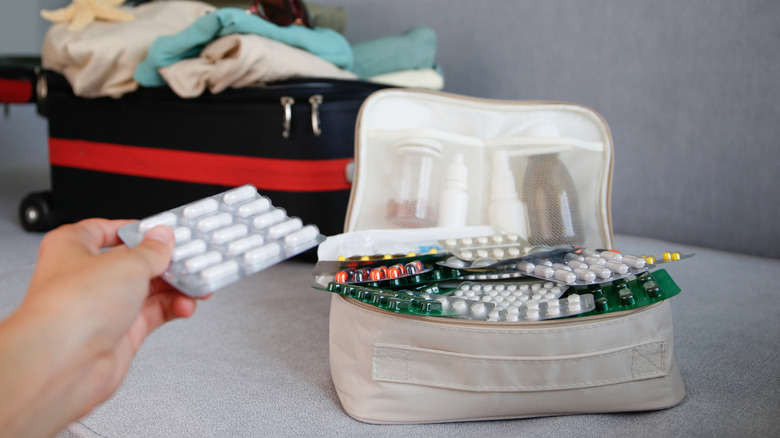Traveling With Medication? Here's What TSA Wants You To Know
There's so much to prepare when it comes to traveling, but flying with medication is a different beast — especially if you have acute or chronic health conditions. It's normal for first-time travelers with medication to be concerned, worried, or wonder if they'll even make it through security without any hiccups. But that doesn't have to be the case. Instead, being prepared and understanding the recommended do's and don'ts when traveling with meds can make the whole process — as well as the anxiety — a lot smoother.
When traveling with meds there are a few rules and medication mistakes to avoid to help you get through TSA and to your destination with your much-needed prescriptions in hand. According to the TSA, the best approach to handling medication when traveling is to make sure they're clearly labeled to facilitate the screening process. When it comes to necessary medication, the 3-1-1 liquids rule does not apply, but notifying a TSA officer at the checkpoint for inspection is necessary as well as placing the medication in a separate tray. Knowing the requirements will make the entire process easier for both you and the TSA officers.
TSA rules for traveling with medication
Pills — also referred to as solid medication — are generally allowed in both carry-on and checked-in luggage with minimal restrictions. However, it is recommended not to travel with more than 90 days' worth of meds, even if you're staying longer.
Medical devices or supplies such as syringes, inhalers, or other medical equipment will be subjected to special screenings. Be sure to notify your TSA officer of your condition and the medical supplies with you in advance. Always remember to bring a doctor's note or prescription with you, even though it is not officially required, it does help ease the process, especially when larger amounts of medication are involved. While using the original packaging is not mandatory, it will raise fewer questions, especially if it has your name and dosage on it. That's why it is recommended to bring medicine in its original packaging to prevent it from being confiscated or take more time during the screening process.
When going through international borders, medications with labels will definitely make the process faster as the names of medications can change as well as laws concerning prescription medication. Be sure to research in advance or check with the embassy especially if you have a chronic condition. When it comes to sensitive drugs such as insulin, avoid common medication mistakes while traveling and keep it in your hand luggage with temperature-sensitive packaging.
Practical tips for smooth airport experience with medication
The first step when packing is to organize your meds in a way that will be easy to remove and show to TSA agents without damaging them. Keep in mind that it is always recommended to keep necessary medication in your hand luggage in case of emergencies. Once it's your turn at the security checkpoint, proactively inform TSA agents that you are traveling with medication instead of being subjected to further inspection that could take longer. This applies mainly to liquid medications that exceed the standard limitations for travel. If your medication does require extra screening, be prepared to open the containers.
When traveling internationally, be sure to research country-specific medication rules as regulations can vary from one country to another. While some countries might be less stringent, others could require specific documentation, so always research in advance to avoid issues upon arrival. A doctor's letter will definitely come in handy, and prescriptions and details of medical devices should be kept on hand to ensure a safe trip — especially if you need to find replacements or refills in another country.


